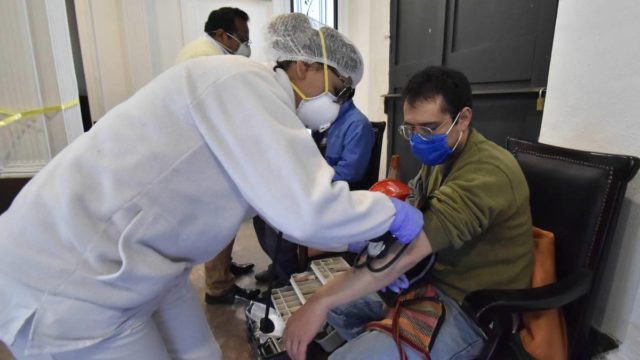
“Modern medicine emphasizes, and rightly so, the importance of science. The focus, however, frequently shifts our attention from the true goal of medical care: the patients.”
This idea was stated by William Osler (1849-1919) for the integral care of patients rather than just treating the specific disease. Here are two recent examples of what is meant with this:
a)A COVID-19 patient to present at a hospital was probably typical of initial patients at many other hospitals around the world at the time. Doctors warned of the effects that COVID-19 can have on the brain. This was an older man with pneumonia, who had not yet been tested for the novel Coronavirus but was supposed to have it. A team of experts carefully evaluated him, prescribed high-flow oxygen, and monitored him on a respiratory guard. That night, he died unexpectedly.
b)The second patient (that came immediately after the first mentioned) was a middle-aged woman sent to an intensive care unit to be connected to mechanical ventilation. The recent death of the first patient led to a more through evaluation. Unexpectedly, she was sitting comfortably on her bed, talking on her mobile to her daughter, her blood oxygen saturation was taken, more out of instinct than out of concern. Due to her appearance, it was expected to be normal (100%). But it was 75%, a level barely compatible with consciousness.
Silent lung damage
It was then learned quickly that advanced COVID-19 patients did not have any of the hallmarks of severe respiratory disease until they suddenly collapsed and died. The science behind this early lesson is now emerging, with a study from Wuhan, China, describing pathological changes in the lung on CT scans of completely asymptomatic patients.
CT scans reveal the damage, even if there are no symptoms
Lack of symptoms is not uncommon in other virulent infections, such as methicillin-resistant Staphylococcus aureus or MRSA and C diff (Clostridioides difficile), but what is striking with SARS-CoV-2 (the virus that causes COVID -19) is that it may be accompanied by underlying organic damage. Researchers have found lesions consistent with inflammation of the underlying lung tissue, that is not specific to SARS-CoV-2 infection and can be seen in many other lung diseases. What remains a mystery is why, despite these changes, patients do not display typical pneumonia symptoms, such as severe shortness of breath. About a quarter of the patients in the study developed fever, cough, and shortness of breath, but many did not.
Why new COVID-19 outbreaks are unavoidable
The idiosyncratic response to infection is one of several mysteries posed by COVID-19, such as why it attacks certain groups and not others: Two people with exactly the same demographics and health can express the disease at opposite ends of the spectrum. The study reinforces that the absence of symptoms does not imply the absence of damage. The lack of symptoms against an active pathology carries a risk for both infected people and the public.
Current recommendations encourage patients to stay home even if they are asymptomatic, this makes sudden death due to late hospital presentation at very high risk. And there is also the public health nightmare, as about 40-45% of people infected with SARS-CoV-2 are asymptomatic, with an equally high viral load as those who are actively ill.
If you add the significant false negative rate of up to 20% in screening (the strategy applied to a population to detect a disease in individuals without symptoms of that disease), where people are wrongly told that they do not have the infection, the scale of the problem is magnified.
The COVID-19 disease is still shrouded in mystery
There are the undercover propagators that will continue to eject the Virus for up to 14 days, and this raises serious questions about the effectiveness of testing strategies or the use of detection tools such as temperature checking.
Snippets of evidence are beginning to be collected, mainly from many small and disparate studies. The whole picture will be assembled as the quality and quantity of evidence expands and refines our understanding of SARS-CoV-2. How the discovery of traces of Coronavirus in wastewater from 4 countries (before the outbreak in China) increases the mystery of its origin.
However, science has not yet informed doctors about the best way to manage their patients. CT scan injuries determine what treatment is needed. A personalized decision based on clinical judgment is still required. So as scientific understanding grows, applying Osler’s advice with renewed conviction: care for your patients with all five senses on high alert. This will instruct you on what you really need to know as the treating physician.

